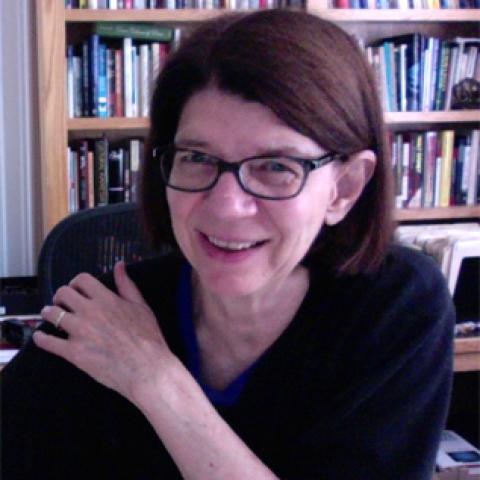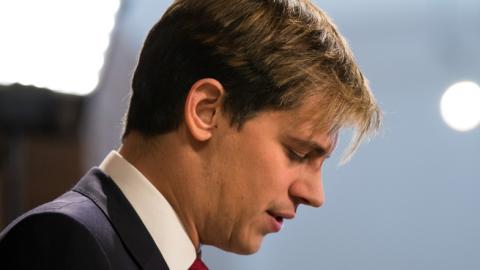“I’m grateful to Father Michael. I wouldn’t give nearly such good head if it wasn’t for him.” With this line, Milo Yiannopulos priced himself out of the market for “conservative” speakers. The alt-right’s favorite potty mouth was scheduled to appear at last month’s meeting of the Conservative Political Action Committee. But when a tape surfaced of Milo riffing about sex between adult men and adolescent boys being not pedophilia but rather a commendable “coming of age,” CPAC canceled his appearance.
Meanwhile, a group of “progressives” at Middlebury College disrupted a public lecture by Charles Murray, a social scientist whose 1994 study of class, race, and IQ, The Bell Curve, made him persona non grata on many campuses. The event was moved to another building for live streaming—but that, too, was disrupted by protestors banging on windows and setting off fire alarms. When Murray and his faculty host, political scientist Allison Stanger, left that building, they were set upon and Stanger was injured.
Before these two incidents fade from our short-term memory, let us pause and consider some problems with our contemporary American understanding of free speech. The first is a failure to distinguish between three ways of limiting speech: 1) coercive censorship by an authority, usually the state, which possesses the power to harass, threaten, imprison, or inflict bodily harm; 2) self-censorship by an individual or group living under the shadow of coercion; and 3) voluntary restraint by a particular community, for reasons more or less freely arrived at and agreed upon.
Under the coercive censorship of a country like Putin’s Russia, Milo would be legally prohibited to speak in public, publish written material, or appear in the electronic media. Any group, organization, or company that violated this prohibition would be threatened, and if they refused to comply they would be de-funded or shut down. Milo’s online presence would be scrubbed by the same blocking, filtering, and surveillance technology that removes kitten snuff films from your social media while placing ads for the store where you just bought a hat. If Milo persisted, he would be sent to prison without trial—or, given his temperament, hired by the Kremlin to run smear campaigns against serious dissenters.
The natural reaction to such coercion is self-censorship. If Charles Murray and his co-author Richard Herrnstein lived in Xi’s China, where many “sensitive” topics are off limits to scholars, they might not have written The Bell Curve. This might not have meant the end of the world, but it would have meant that the book’s discussions of research about class, race, and IQ would not have been scrutinized as exhaustively as they were. Instead, a cruder version of those hypotheses might have festered in a closed container until they became even more explosive than they are now.
The third way of limiting speech, voluntary restraint, is central to the American tradition, which has always relied less on official censors than on unofficial gatekeepers—editors, publishers, producers, curators, educators, and many others—to judge what is and is not acceptable speech for a particular community. These gatekeepers still exist, but their authority is weakened by another problem with our contemporary understanding—namely, the idea that free speech is an absolute, uncompromising principle that, overriding all other considerations, requires us to find every type of utterance, from obscenity to slander to blasphemy, equally acceptable; and every type of limit, from totalitarian repression to everyday social taboos, equally unacceptable.
This idea is found across the political spectrum, from the liberationist left to the libertarian right. But its logic is that of the slippery slope. If we begin with the axiom that every limit on speech is perforce a fatal step toward tyranny, then we are compelled to conclude that the only way to avoid tyranny is to remove all limits. But the axiom is false. In all of history, no society has ever removed all limits on speech. Yet some societies are tyrannies, while others remain, for all intents and purposes, free. If you are wondering what accounts for the difference, the answer is simple: the aforementioned ability of a given society to sustain voluntary restraint as an alternative, both to coercive censorship and to the self-censorship that takes hold in its shadow.
To be sure, it can be tricky to distinguish between the three ways of limiting speech. For example, under 21st-century authoritarianism, there is a large grey area between coercive censorship and self-censorship. With greater resources and exposure to the outside world, regimes like Putin’s Russia and Xi’s China favor buying people off over scaring them silent. In these and lesser “soft” dictatorships, the game is to make life more tolerable, even pleasant, for those who follow the party line than for those who do not. Put another way, the iron hand is still encased in the velvet glove, but the velvet is thicker.
Meanwhile, in the liberal democratic West, there is considerable confusion between self-censorship and voluntary restraint. When exercised by an individual, voluntary restraint is called tact, discretion, reticence, modesty, and prudence. When exercised by a particular community, it is called conformity, custom, propriety, taboo—even civility. Perhaps because of our diversity, Americans have always been more comfortable with individual restraint than with communal restraint. Indeed, when it comes to informal limits on speech, we incline toward John Stuart Mill’s famous warning, in On Liberty, that the worst enemy of truth is social conformity.
Americans also embrace Mill’s dictum that society needs “eccentric” individuals to disrupt the status quo. Mill was referring to the rare independent thinker whose ideas lead to positive change. Today, by contrast, we are surrounded by ever-so-eccentric individuals busy “pushing the envelope,” “stirring the pot,” “thinking outside the box,” and every other cliché you can imagine, on the idiotic assumption that disruption and change are always good. No wonder we celebrate an ugly character like Milo, whose only talent is for pissing on the few inhibitions we still share.
The next step, for which we can thank the ascendancy of postmodernist theory in American higher education, is to condemn every voluntary restraint of speech, whether communal or individual, as self-censorship. Consider this blog post by Linus Owens, professor of sociology at Middlebury: “I am angry that free speech is conflated with civil discourse, which is then equated with allowing a known racist and pseudo-scientist to stand on stage and gain the legitimacy of being on our campus, and only then we can ask smart and devastating questions in return. That’s one model, sure, but it’s not the only one.” What the better model might be out there, the professor does not say.
To paraphrase George Orwell, there are some definitions of free speech so preposterous, only professors at elite universities could embrace them. On today’s blue-state campus, faculty and students who choose to keep a civil tongue in their heads may now expect to be pilloried as self-censors, spinelessly capitulating to the hidden coercive power of racism, sexism, cisgenderism, heteronormativity, and other hegemonic discourses with even longer names.
As the reader may have guessed, I am not a big fan of political correctness. And I share the concern of many of my colleagues about outside pressures, some from the federal government, to curtail freedom of speech and expression in the academy. But bad as things are on the contemporary college campus, they could be worse. We could be living in a country where a lack of shared norms regarding public speech has resulted in state censorship—in the form of hate speech laws.
Like campus speech codes, hate speech laws tend to emerge from situations where well-meaning people lose patience with the long, slow, frustrating work of building and maintaining voluntary restraints on public speech. An example of this work being successful is the transformation of the “n-word.” Once a commonplace in America, the “n-word” gradually, in the years after the civil-rights movement, became a taboo, violated only by blacks who use it as in-group slang, and by white bottom-feeders who, unlike Milo, have no bottom line to worry about.
When voluntary restraint fails, the impulse is to impose legal restraints in the form of speech codes and hate speech laws. But the cure is worse than the disease, because in practice, legal restraints mean litigation, and litigation means prolonged court cases involving convoluted arguments over fine points of law that make little sense to the general public. For example, French law forbids hate speech directed at a religious individual, but allows blasphemy directed against a religion per se. In other words, it is illegal for Pierre to verbally abuse Muhammad for being a Muslim, but perfectly legal for Pierre to verbally abuse Islam in front of Muhammad’s whole family. I’m not a lawyer, but to me this distinction strongly resembles a hair waiting to be split.
Most Americans are not lawyers, and we judge how others speak based not on fancy legal footwork but on widely shared norms of decency, propriety, and civility. And we are right to do so. If Americans no longer have any such norms, then the law can’t save us, because the liberty of any society depends on its capacity for voluntary restraint. Henry Steel Commager once wrote. “Censorship always defeats it own purpose, for it creates in the end the kind of society that is incapable of exercising real discretion.” Turn that around, and you have our present situation: a failure to exercise discretion and judgment that invites the eventual destruction of the world’s most robust tradition of free speech.



















